So you want to transition into zero-drop shoes like Altras or even minimal/barefoot shoes like Xero Shoes?
How do you start?
Slowly!
The transition to running any decent distance in zero-drop shoes can take months. You constantly rotate your new barefoot shoes with old conventional models from Hoka or Nike to ease your way into zero drop.
But what if there was another way…….PR Gear’s Bridge Soles!
Just replace the insoles of your new zero-drop shoes with the Bridge soles and head out on your run!
PR Gear is a new company founded by one of the original Altra owners, and this time, they’re attempting to change the way we run with tools to nudge us in the right direction. And Bridge Soles were ideally placed for Barefoot Run Review.
How do you use them? Do they actually work? That’s what we’re going to find out in this review! So keep reading.
Affiliate Disclosure: By clicking through the links on this page and purchasing the products, you’ll be helping me out. This is done because I receive a kickback from the sellers at no extra cost to you! Thank you so much for supporting us!
I received the PR Gear Bridge Soles at no cost from the manufacturer, but I am in no way compensated for this review.
They’re supportive/cushioned insoles designed for use during the transition phase from conventional shoes to zero drop/minimal shoes.
I know what you’re thinking …. Nick…. As a minimal runner, aren’t you against support!?
Well yeah, kind of. But like most things, foot support has its place.
For example, if you have a significant foot injury, you’ll want to support it with an insole first, then focus on an intervention to recover strength in the foot; only then could you remove the insole.

It’s technically like an intervention when transitioning to zero-drop shoes from conventional shoes! You’re removing the conventional shoes’ supportive features and exerting more load on your feet and lower legs. That’s ok, and that’s the point of zero drop/minimal. We instead rely on our skeletal, muscular system to support our running. But we must ease into zero-drop shoes and allow our bodies time to adapt.
One way of doing that is by gradually rotating zero-drop shoes into our running.
My advice when transitioning to minimal shoes is very conservative, but for good reason. Only 5 minutes at a time! And that’s after you’ve been walking in minimal shoes for months!
So what’s the alternative?
Which minimal running shoe is for you?
Take a quick 5-question quiz to identify the perfect minimal running shoe for your feet! You'll get both road and trail options based on your answers!
The Bridge Soles have three important features
- Supportive cushioned arch
- A 4mm raised heel
- A cushioned domed forefoot.
Why these interventions?
These points map directly to conventional running shoe features, and they cause common issues when transitioning to zero-drop.
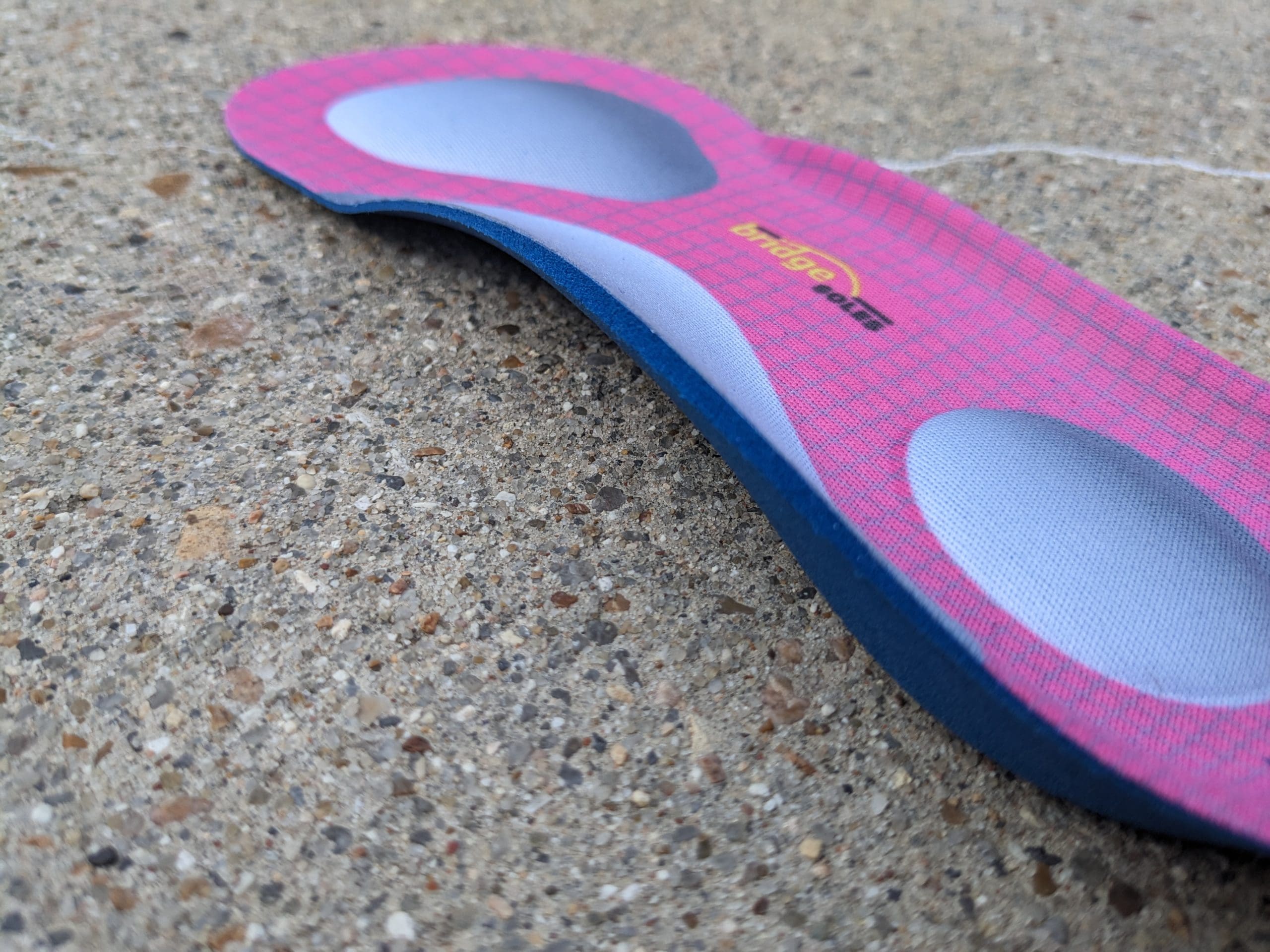
Arch Support
Most conventional running shoe brands use some type of arch support to remove stress from the foot and give a perception of “comfort.”
But in the long run, it’s better to strengthen the foot arch to withstand longer distances and greater load. And that’s why we have flat footbeds in zero-drop shoes.
Going from supportive shoes to no arch support in a short period of time is likely going to cause pain and possible injuries. Therefore, replacing your zero drop insoles with Bridge Soles in the short term could lessen complications.
Which Altra Shoe is for you?
Take a quick 4-question quiz to identify the perfect Altra running shoe for your feet! You'll get both road and trail options based on your answers!
4mm Raise Heel
You’ve likely heard of a “heel drop” or “drop” of a running shoe. This is the stack height difference between a shoe heel and the forefoot.
You’ll see a drop ranging from 4mm to 12mm in most conventional shoes.
Jumping straight into zero-drop shoes (0mm difference) can strain the Achilles tendon and the chain of muscles and tendons in the back of the leg.
To run with a more “natural” gait, we want our foot to be level with the ground; thus, zero drop exists.
But to reach the goal of zero drop, we want to remove the drop slowly.
The Bridge Soles elevates your heel up 4mm to emulate a conventional shoe. The 4mm will compress over time, dropping your heel gradually.

Cushioned Domed Forefoot
A weak foot often means weak muscles in and around the ball of the foot.
This can often lead to scrunching of the toes and the bones in the foot, causing nerve pain and discomfort.
The job of minimal and zero-drop shoes is to regain that strength and allow the toes and pads of the feet to spread weight evenly across the foot, relieving pain and pressure.
But until the strength has been built, you could need a helping hand.
The dome at the front of the Bridge Soles encourages the spread of the metatarsals (bones in the foot) and distributes the pressure across the forefoot.
Over time, your feet will gain the strength and mobility to achieve this action for yourself. And at that time you can replace the Bridge Soles with your original insoles and still have happy feet!
PR Gear Bridge Soles
PrGear.co
Use Code: BRR20 for 20% off!
Now that we know the theory, do the Bridge Soles actually work?
This was tricky to answer because I’d fully transitioned into barefoot shoes years ago.
So, I decided to verify the effects in a different way.
In some of my reviews, you may have noticed I use a pair of running gait sensors to measure forces during my running gait. I use these University grade devices to compare the effect shoes have on my legs and body.
Logically, it made sense to compare my results from a minimal shoe with the Bridge Soles in and without the Bridge Soles in and determine if it pushed my gait towards a result you commonly see in a conventional shoe.
Sensor Results
I performed the same 1.5-mile loop in Xero Shoes HFS shoes, with and without Bridge Sole.
And the results came out exactly how I expected them. Don’t worry about the number; I’ll explain it all later.
| Without Bridge Soles | With Bridge Soles | |
| Impact Force (G) | 9.2 | 10.1 |
| Ground Reaction Force (multiple of body weight) | 2.6 | 2.7 |
| Footstrike (higher number == closer to forefoot) | 14 | 13.8 |
| Pronation Angle (Degrees) | -16.0 | -15.2 |
I’ll try and keep this short so as not to bore you. You’ll have to believe me on the reasoning, but if you want to know more, please feel free to contact me!
- Impact Force – The higher the cushion, the greater the force.
- Ground Reaction Force – The higher the cushion, the greater the force.
- Foot strike – The greater the heel drop, the further towards the heel you land.
- Pronation Angle – The greater the support, the less the pronation angle.
All the above points towards the Bridge Soles acting more like conventional shoes with support, heel drop, and more cushion.
This makes me believe that the Bridge Soles will help lessen the load during the transition phase thus the product works! 🙂
That’s lucky…
Now that we know they work, how should we use them?
We don’t want to use them forever, because that’d be like using conventional shoes!
But at the same time, everyone is different! So it’s tough to be prescriptive.
Please note the following is only informational! Please consider your current stress, physically and mentally, and adjust accordingly.
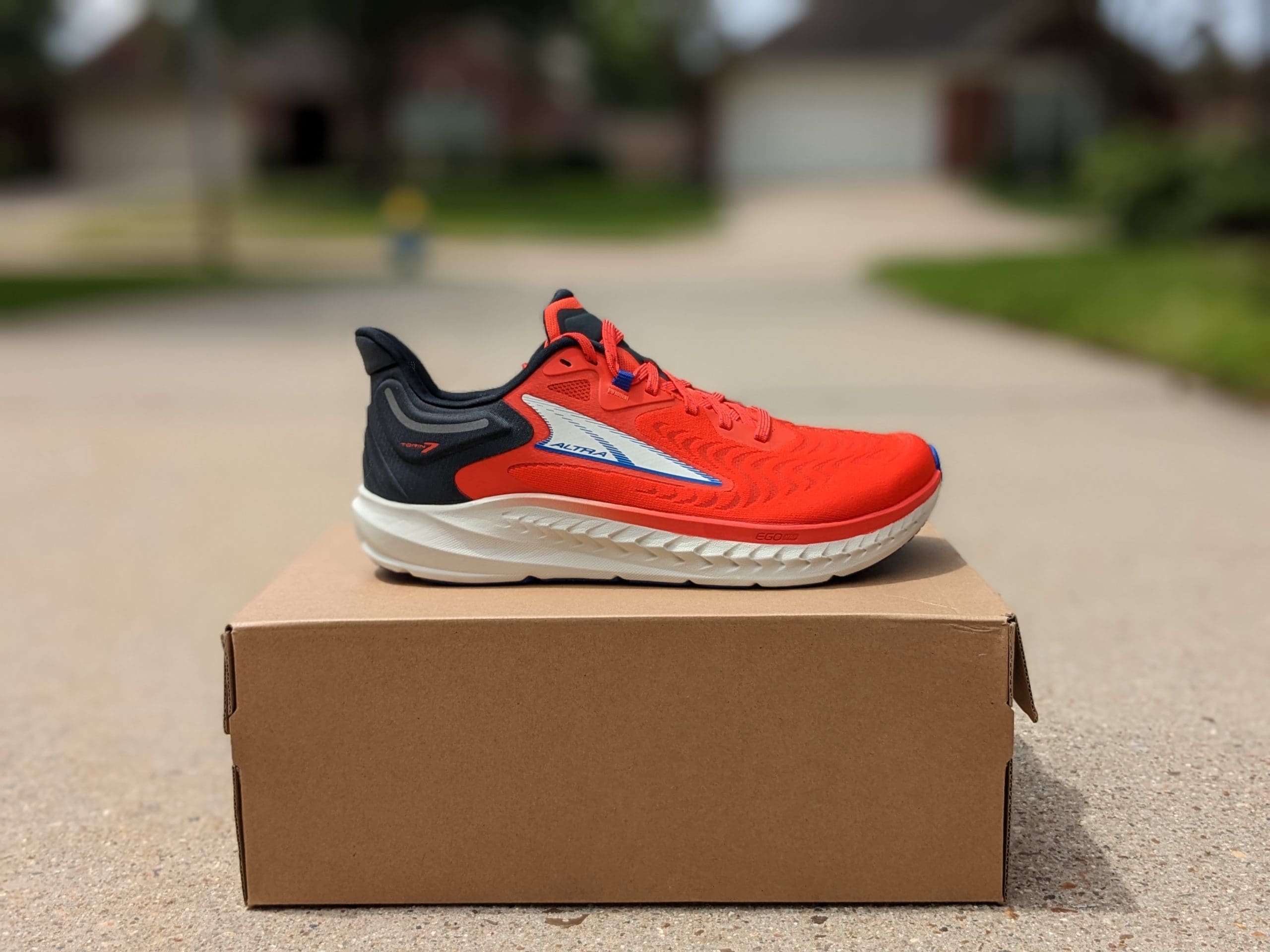
Transitioning to Zero Drop (Altra’s)
- Week 1 – Use Bridge Soles in your new zero-drop shoes (without the original insole) for all runs
- Week 2 – Remove the Bridge Soles (and replace the original insole) for 1 shorter run
- Week 3 – Remove the Bridge Soles (and replace the original insole) for 2 shorter runs
- Week 4 – Remove the Bridge Soles (and replace the original insole) for 1 longer run
- Week 5 – Remove the Bridge Soles (and replace the original insole) for 1 longer run + 1 shorter run
- Week 6 – Remove the Bridge Soles (and replace the original insole) for all but 1 longer run
After week 6, I would remove the Bridge Soles for all runs, but stay in tune with the fatigue in your lower legs and feet.
If you feel greater stiffness and fatigue, repeat from week 4 and continue the cycle until you can run your standard distances and pace.
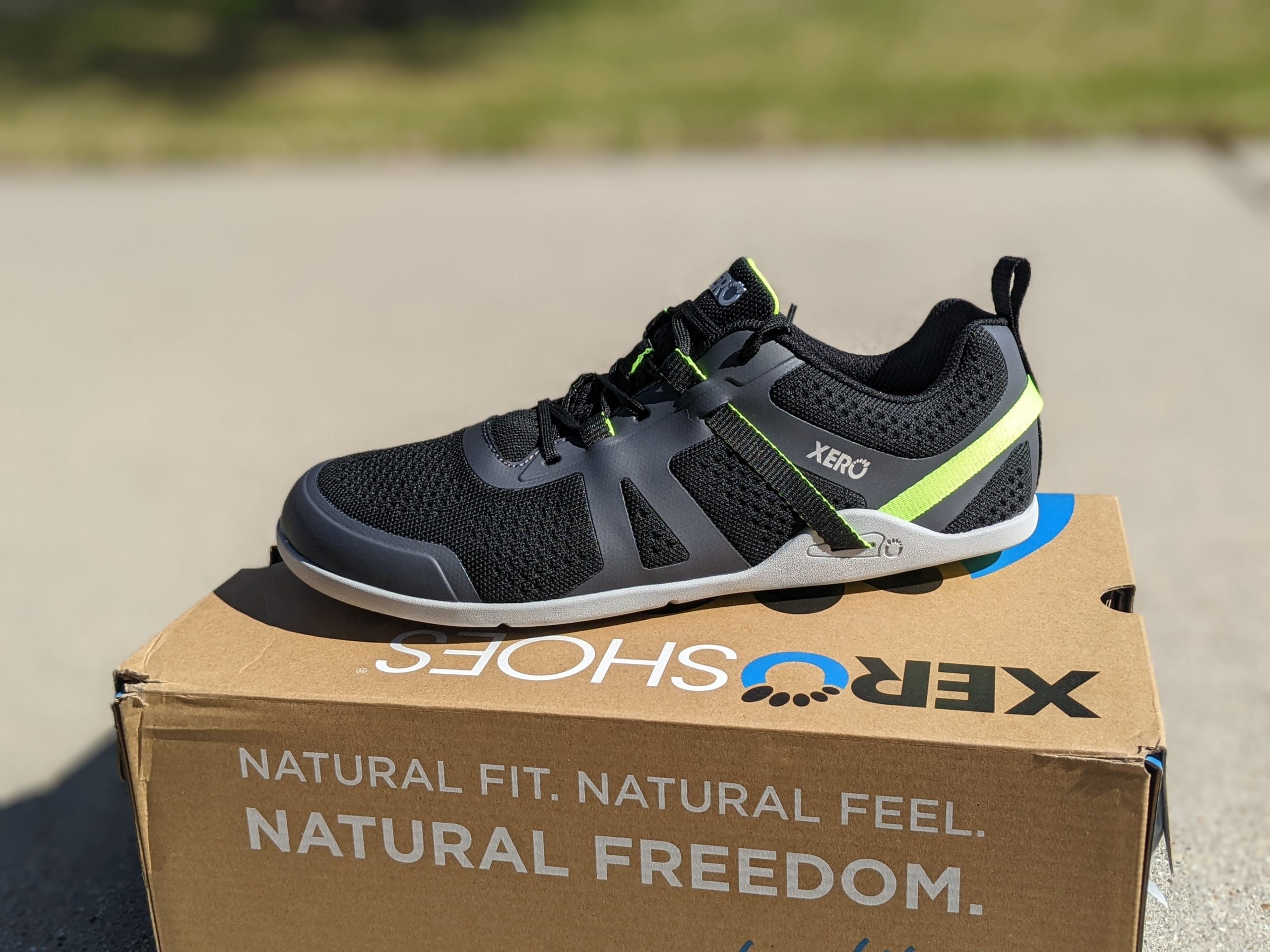
Transitioning into minimal/barefoot shoes
Transitioning in barefoot shoes will be a little slower because the stress on your lower legs and feet is much greater!
The risk of bone injuries is real and often the hidden issue behind a failed barefoot transition.
Because of that, I’d suggest following my 2-step program and use Bridge Soles in your minimal shoes when you feel tired or stiff.
And if you want a more tailored approach incorporating Bridge Soles, contact me, and we can work together to build a plan toward your barefoot journey!
The PR Gear Bridge Soles are a great tool available in your toolbox.
They’re no magic bullet; you must still be patient with your zero-drop transition.
But they offer you an option when the transition is moving too fast, or you feel overly fatigued in your feet and calves.
If you feel you could benefit from the Bridge Soles, they’re only $19.99. That’s cheap enough to test if you’ll find benefits without breaking the bank.
PR Gear Bridge Soles
PrGear.co
Use Code: BRR20 for 20% off!
Do you want extra help on your zero drop or minimal shoe transition?
I’m here to help!
Get in touch and tell me what your goals are. And I’ll promise to reply with actionable and constructive points to help you along your barefoot journey!
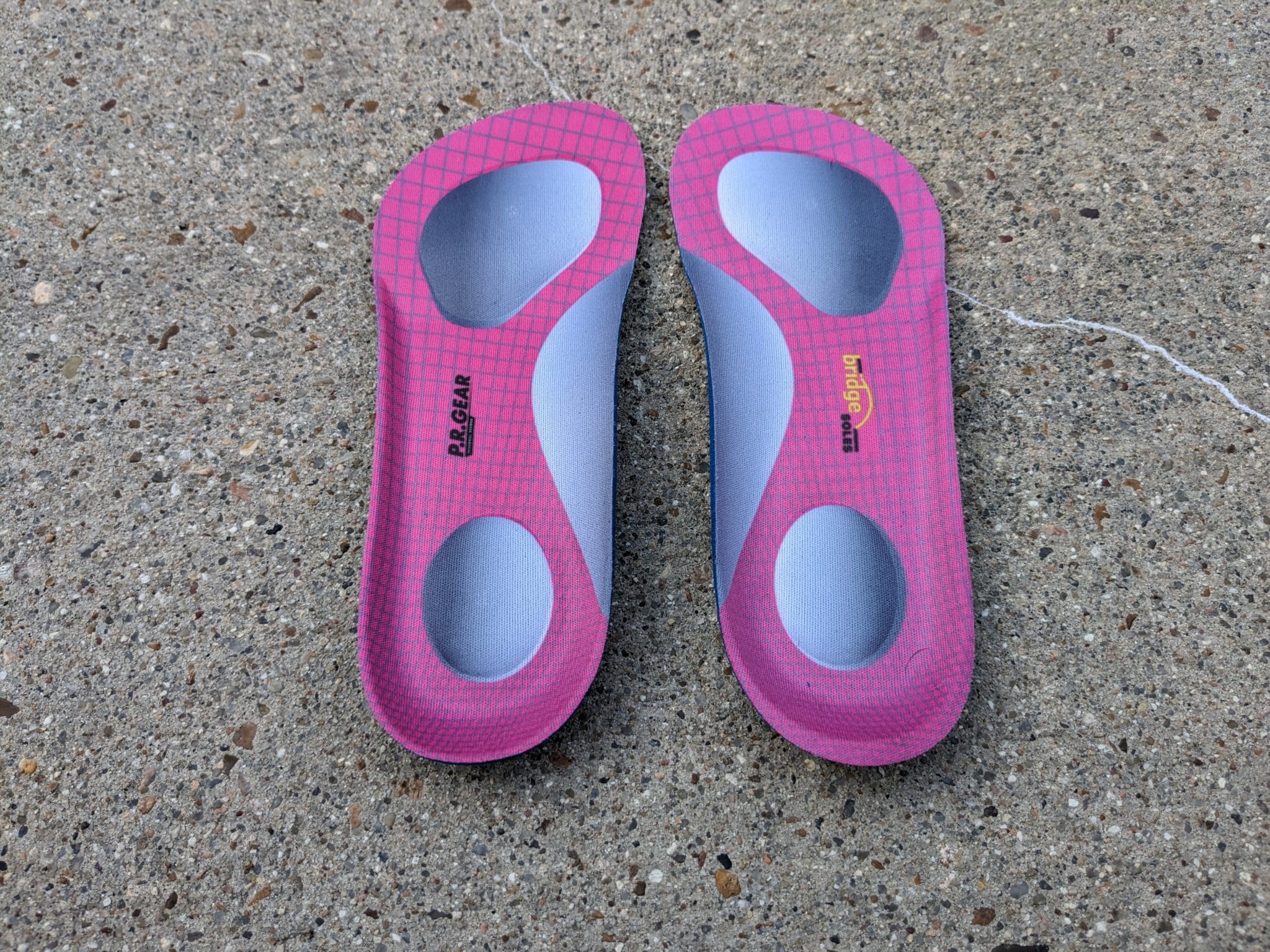
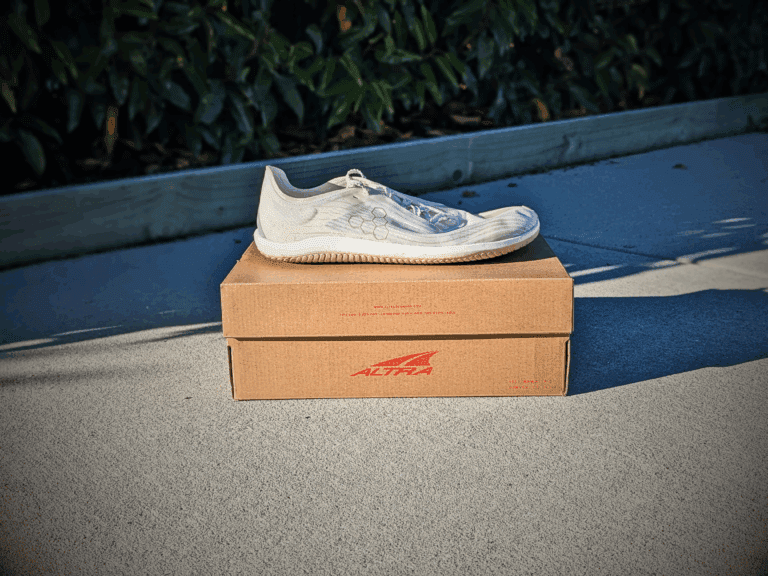


Hello, do you think that this insole can be a good tool to use for an ultra trail to reduce some calf and foot fatigue? I usually use the inov8 trailfly g270 V2 (in drop 0), but I hesitate to take them for my next ultra (110km and 6700m of D+). Thank you for your advice !
That’s not a bad idea, I didn’t think of this.
You’ve just got to remember that it’ll likely shift the stress into a different area of the body, but in some cases this could be fine, i.e. the larger quads and glutes etc. Maybe you could even put them in a drop bag and use them for the second half of the race?
Take all this advice with a pinch of salt because it’s all speculation, but I like the way you’re thinking!
Indeed, in an ecological and economical approach, I prefer to just use extra insoles depending on the distances rather than multiplying the pairs of shoes (even if the new TIMPs from Altra will surely catch my eye for ultras) . By the way, do you have a release date for the TIMPs? Thank you again for all your content and articles which are really great.
Have you chosen your next shoe for your ultras?
> I prefer to just use extra insoles depending
Yeah, it’s a good approach, I do the same with Mesa Trails depending on trail conditions (rocks, buffed out trails etc.)
As for the new Timps, they are available in the US from REI already. I tried them out and they felt “ok”. Soft, slightly stiff, and more rockered than Lone Peaks + Superiors etc. But that’s what we expect. The biggest upgrade is the outsole, because the Timp 4 outsole was so bad!
I’ve seen they’ll be available in other retails stores in the US on 1st Feb. I’m hoping to grab a pair to review when that occurs. I’m not sure about Europe yet.
For me, shoe choice for Ultras is still tricky.
– My feet got beaten up in the Xero Shoes Mesa Trail II’s in Andorra.
– The Xero Shoes Scrambler Low were “ok”, but a little sloppy for my 100km. But I had zero feet issues, so I can’t complain at that.
Next time, I like you’re idea, and I’d consider the Mesa Trail’s with Bridge soles in. Or, I’d use some “broken in” Superiors for dryer conditions. It’s still really hard to know. But for now, I’m focused on fast packing training, so LONG distances, in minimal shoes.
And when is the inov8 trailfly G270 V2 review ;-)?
Haha! I think you know the answer. NEVER! I’m waiting for the new wide toe box options from Inov8. I’m pretty excited to be honest.